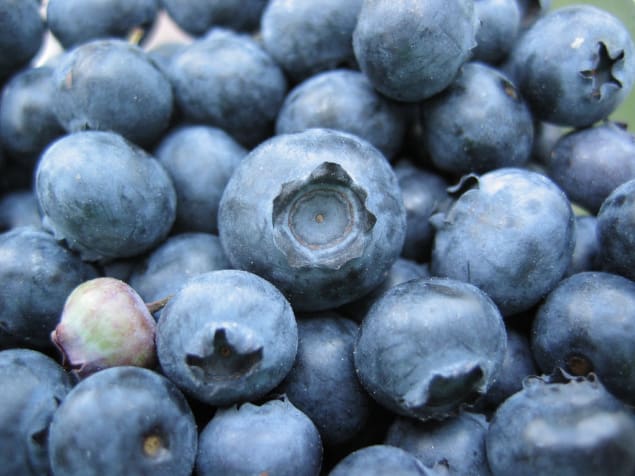
It’s probably not a question you’ve thought about before. But have you ever wondered what would happen if the Earth were replaced by an equal volume of blueberries? Well, now you can sleep easy, as that fruity conundrum has been answered, thanks to computational neuroscientist Anders Sandberg from the University of Oxford.
Sandberg, who works at something called the Future of Humanity Institute (no, we’d never heard of it either), was inspired to carry out the work after a user posted the question on the Physics Stack Exchange website. By taking into account the density and compressive strength of blueberries, Sandberg found that a “blueberry Earth” would turn into a “roaring ocean of boiling jam” with geysers of steam ejecting some of the berries into orbit. In addition, he discovered it would have an ice-like core much like a “warm granita” — that classic Italian semi-frozen dessert made from flavoured sugar and water.
“The final state of blueberry Earth is somewhat similar to oceanic exoplanets, although far lighter than any observed so far,” he writes in the seven-page paper.
So is there a chance that a blueberry Earth could be somewhere in the universe or possibly lurking in the Kepler mission’s data? “I would be pretty shocked to find a blueberry Earth,” Sandberg told Physics World. “But a super-light ocean world? Maybe. It is not inconceivable that smallish ice bodies could form outside the frost line in a solar system and either migrate inwards or melt as the sun becomes hotter over time.”
Sandberg says that he may study the physics of another “crazy world”, but adds that he suspects that other fruit planets would end up being similar. “There is likely some kind of ‘fruit main sequence’ that is parametrised by the water/solid content or maybe also the density and air content,” he notes.
Away from fruit, earlier this week the winners of this year’s Fields medal was announced at the start of the International Congress of the International Mathematical Union in Rio de Janeiro. The four mathematicians to bag the prestigious prize were Caucher Birkar from the University of Cambridge, Alessio Figalli from the Swiss Federal Institute of Technology Zurich, Peter Scholze from the University of Bonn and Akshay Venkatesh from Stanford University.
Yet just minutes after Birkar received the 14-carat gold medal it was stolen. He apparently put the 6 cm-diameter gong in his briefcase together with his phone and wallet and left it on a table at the conference.
While authorities later found the briefcase outside the venue, the $4000 medal and the wallet are still missing. In a statement, the organisers say that “images recorded at the event are being analysed” and that they are “co-operating with local police authorities in their investigation”.
And finally from researchers at the top of their game, to those just starting. We were interested to discover this week that Mexico’s National Autonomous University has admitted its youngest student in the university’s century-long history. After passing the entrance exam and completing preparatory study at the university, 12-year-old Carlos Santamaria Diaz will begin a degree in biomedical physics later this year. Could Alia Subur’s record of being the youngest professor be under threat?



